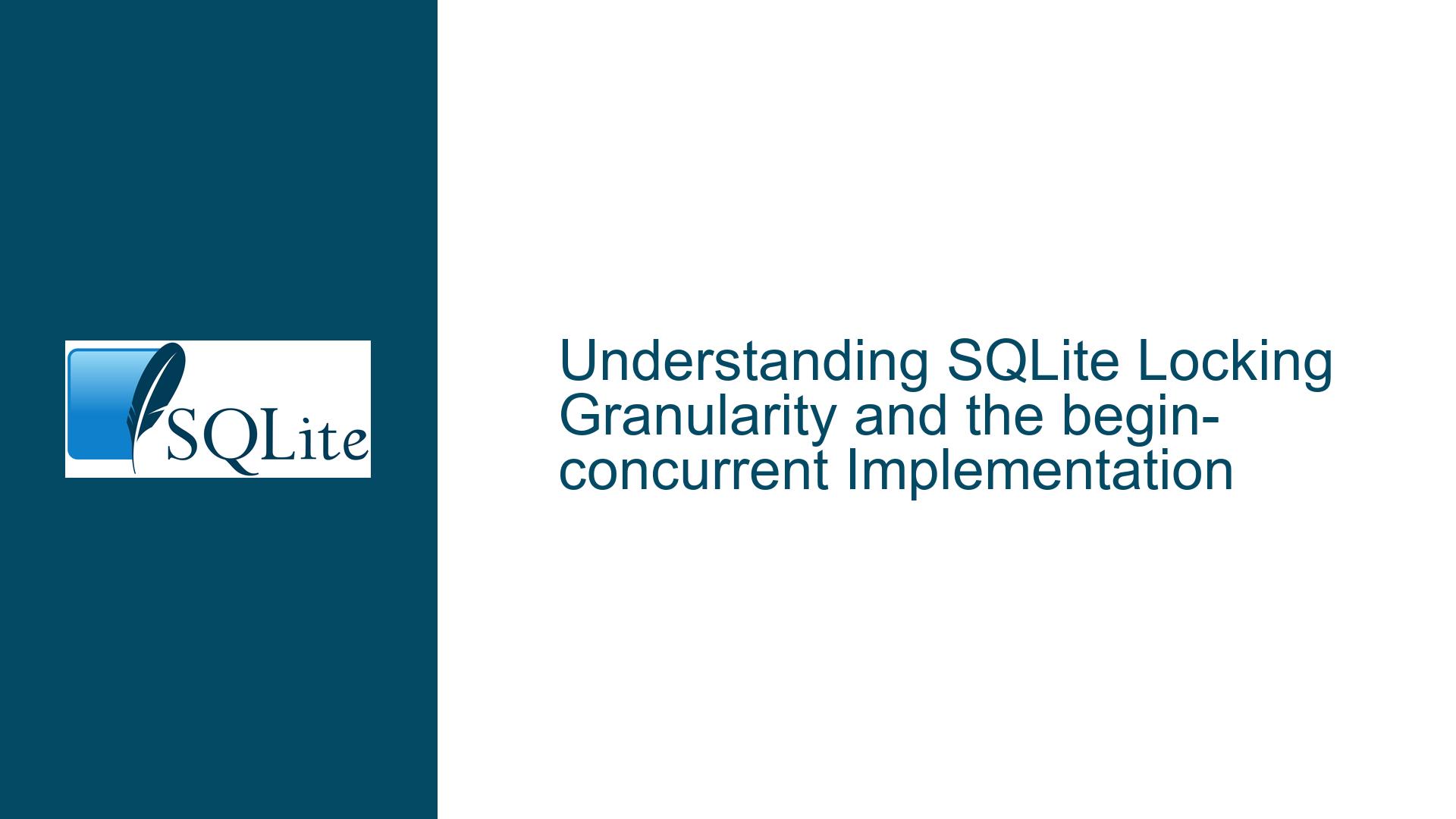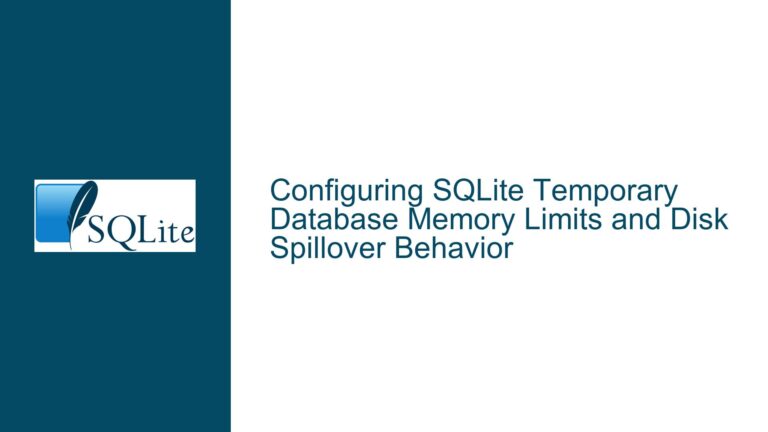SQLite Locking Granularity and the begin-concurrent Implementation
SQLite Locking Mechanisms: Database-Level vs. Page-Level
Locking mechanisms are foundational to database systems, governing how concurrent read and write operations are managed. In SQLite, the default locking strategy operates at the database level, meaning that when a write transaction occurs, the entire database file is locked to ensure transactional integrity. This design simplifies implementation and guarantees ACID (Atomicity, Consistency, Isolation, Durability) compliance under most workloads. However, database-level locking inherently limits concurrency, as only one writer can operate on the database at a time.
The concept of page-level locking introduces a finer granularity of control. Instead of locking the entire database during a write operation, only specific pages (fixed-size blocks of the database file) are locked. This allows multiple writers to modify different parts of the database simultaneously, significantly improving concurrency in high-throughput scenarios. Page-level locking is particularly advantageous for applications with frequent, small, disjointed write operations, such as IoT data logging or multi-user web applications.
The begin-concurrent branch of SQLite represents an experimental effort to implement page-level locking. This branch diverges from the mainline SQLite codebase and introduces a new concurrency model where writers can coexist without blocking each other, provided they operate on distinct pages. The branch also includes enhancements to the write-ahead log (WAL) mode, enabling more efficient management of concurrent transactions. Despite its potential, begin-concurrent remains experimental and is not yet integrated into official SQLite releases. Its development is ongoing, with periodic updates reflecting refinements to the concurrency model and bug fixes.
Why Database-Level Locking Persists in SQLite
The persistence of database-level locking in SQLite stems from its design philosophy, which prioritizes simplicity, reliability, and broad compatibility over high concurrency. SQLite is engineered as an embedded database, often deployed in environments where multiple processes or threads accessing the same database are rare. For instance, mobile apps, desktop software, and edge computing devices typically exhibit low write concurrency, making database-level locks sufficient.
However, three key factors drive interest in page-level locking:
- Increased Write Concurrency Needs: Applications requiring simultaneous writes from multiple connections (e.g., real-time analytics, distributed systems) face bottlenecks under database-level locks.
- Emergence of High-Performance Storage: Modern NVMe drives and faster filesystems reduce I/O latency, making locking overhead more pronounced.
- Adoption in Server-Side Workloads: While SQLite is not a client-server database, its simplicity has led to niche server-side uses where concurrency limitations become apparent.
The begin-concurrent branch addresses these challenges but introduces complexity. Page-level locking requires sophisticated coordination to avoid conflicts, manage transaction rollbacks, and ensure durability. These trade-offs explain why the feature remains experimental.
Implementing and Optimizing Concurrent Writes in SQLite
To mitigate locking-related bottlenecks, developers can explore the following strategies:
1. Evaluate the begin-concurrent Branch
- Compilation and Integration: Clone the begin-concurrent branch from the SQLite source repository. Compile it as a standalone library, replacing the default SQLite build in your project. Note that this branch may not be API-compatible with all existing SQLite wrappers or ORMs.
- Concurrency Modes: Enable the branch’s enhanced WAL mode by setting
PRAGMA journal_mode=WAL;andPRAGMA begin_concurrent;. This allows multiple writers to proceed concurrently, with conflict resolution handled at the page level. - Testing and Monitoring: Use tools like
sqlite3_traceor custom logging to identify transaction conflicts and retries. Monitor performance metrics (e.g., transactions per second, lock wait times) to validate improvements.
2. Optimize Existing Database-Level Locking
- WAL Mode: Even without begin-concurrent, enabling WAL mode (
PRAGMA journal_mode=WAL;) allows reads to proceed concurrently with writes, reducing contention. - Transaction Batching: Group multiple write operations into a single transaction to minimize the duration of exclusive locks.
- Connection Pooling: Use a single write connection and multiple read connections to avoid contention.
3. Consider Alternative Concurrency Models
- Sharding: Partition the database into smaller, independent files (shards) to distribute write load.
- External Locking Services: Implement application-level locks (e.g., using file locks or Redis) to coordinate writes outside SQLite.
- Database Alternatives: For workloads requiring innate high concurrency, consider lightweight alternatives like DuckDB (for analytics) or LiteFS (for distributed SQLite).
4. Contribute to begin-concurrent Development
- Engage with the SQLite community through mailing lists or forums to report bugs, propose enhancements, or submit patches. The experimental nature of begin-concurrent means user feedback is critical to its maturation.
By combining these strategies, developers can tailor SQLite’s concurrency behavior to their application’s needs, balancing simplicity with performance. While begin-concurrent offers a path toward page-level locking, its adoption requires careful evaluation of stability and compatibility requirements. For most use cases, optimizing existing locking mechanisms and workload patterns will yield significant gains without venturing into experimental territory.






